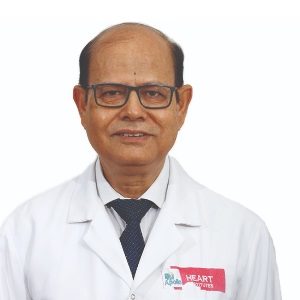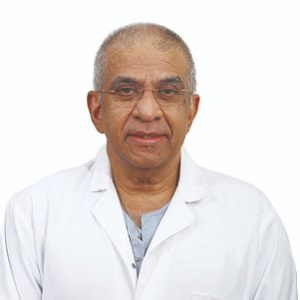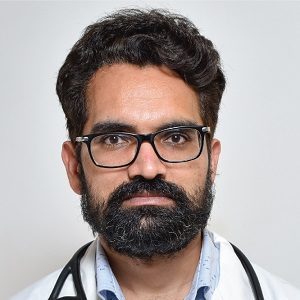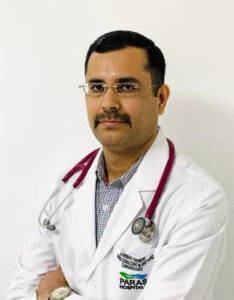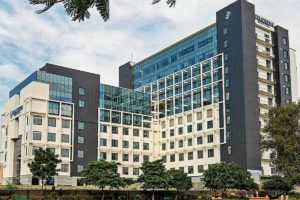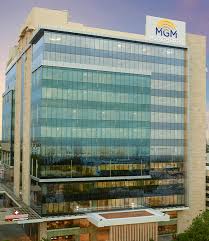Best Doctors for Aortic Aneurysm Surgery in India
- Cardiac Surgeon, Gurugram, India
- Over 15 years’ experience
Profile Highlights:
- Dr. Rachit Saxena is an experienced cardiac surgeon, who is known for his extreme dedication to his profession, and for providing absolute patient satisfaction.
- Supported by an efficient cardiac surgical team, Dr. Saxena is known for successfully managing the most complex of cardiac surgical problems.
- Dr. Rachit Saxena is known especially known for the capability to perform cardiac surgery with minimal blood requirement and ensure early mobilization and return to work.
- Cardiothoracic and Vascular Surgeon, New Delhi, India
- Over 36 years’ experience
Profile Highlights:
- Dr. N Sastri is a renowned cardiothoracic surgeon in India with extensive experience in critical heart surgeries.
- He has nearly 36 years of experience and is a senior consultant- Cardiothoracic & Vascular Surgery with Indraprastha Apollo Hospitals, New Delhi.
- Dr. Sastri specializes in the diagnosis and treatment of vascular disorders using advanced techniques. He has expertise in Total Anomalous Pulmonary Venous Connection Repair, Arterial and Ventricle Defects Surgery, Cardiac Resynchronization Therapy, Balloon Valvuloplasty, CABG LV restoration, PDA Device Closure, PPI, Valve Replacement, and Atrial Fibrillation Surgery.
- Over the years’ Dr. Sastri had treated patients across various countries. In addition to the adult and neonatal cardiac surgeries, he is involved in research and put out many research papers in different medical journals.
- Cardiac Surgeon, Cardiothoracic Surgeon, Vascular Surgeon, Chennai, India
- Over 35 years’ experience
Profile Highlights:
- Dr. Dillip Kumar Mishra is a well-known and experienced Cardiothoracic Surgeon in Chennai who has completed 35 years of specialized experience.
- The doctor gained experience working overseas in countries like Italy, Saudi Arabia, Bangladesh-Dhaka, and India.
- The doctor offers the best services to the patients, some of the prominent services include Intra – Arterial Thrombolysis, Mitral/Heart Valve Replacement, Cardio-Thoracic Surgery, bypass surgery, Radial Approach Angiography Balloon Mitral Valvuloplasty, etc.
- Cardiac Surgeon, Cardiothoracic Surgeon, Vascular Surgeon, Chennai, India
- Over 31 years’ experience
Profile Highlights:
- Dr. Vijay Shankar S is a senior cardio-thoracic Surgeon in Chennai having experience of more than 30 years in Cardiac Surgery.
- Dr. Vijay Shankar was a fellow Coronary Artery Surgery and Congenital Heart Surgery at the University of Wisconsin, USA.
- He provides consultation and diagnostic services for Mitral/Heart Valve Replacement, Cardiac Pacing, Invasive Cardiology, ABPM, Balloon Mitral Valvuloplasty, CT Angiography, etc.
- Interventional Cardiologist, Gurugram, India
- Over 10 years’ experience
Profile Highlights:
- Dr. Jagdeep Yadav is one of the best cardiac surgeons in Gurugram. He is particularly interested in non-coronary therapies such as peripheral interventions and device closures.
- Dr. Jagdeep Yadav is skilled in using modern techniques in interventional cardiology and non-invasive cardiology procedures. He employs cutting-edge technologies such as IVUS, OCT, FFR, and IVL to make life better in complex cardiac therapies.
- Cardiovascular Surgeon, Cardiac Surgeon, Gurugram, India
- Over 32 years’ experience
Profile Highlights:
- Dr. Vijay Kohli is one of the best cardiac surgeons in India. He has brought an evolution in the spectra of Cardiac Surgery, wherein, he was the first leading surgeon to perform CABG on a beating heart in Kathmandu, Nepal.
- Vijay Kohli performed the first coronary artery bypass surgery in Jammu Medical College in 2001.
- Additional Director Cardiology
- 15 Years Experience
Profile Highlights:
Profile Snapshot of Dr. Hemant Gandhi
- Hemant Gandhi is a distinguished figure in the field of interventional cardiology with over 15+ years of extensive experience.
- He is recognized for his proficiency in handling cases involving congenital heart defects such as ASD and PDA, along with peripheral angiography, angioplasty, and balloon valvuloplasty.
- Gandhi holds the distinction of being the first D.M. (Cardiology) candidate to graduate from the prestigious PGIMER and Dr. RML Hospital, New Delhi.
- Beyond his clinical practice, he is actively engaged in the education and training of medical students in the specialized domain of Cardiology.
- His contributions to academia are further underscored by a significant number of publications that enrich the field with his insights and research findings.
Best Hospitals for Aortic Aneurysm Surgery in India
Lilavati Hospital & Research Centre, Mumbai
- City: Mumbai, India
Hospital Highlights:
- Lilavati Hospital & Research Centre is India’s premier multi-speciality tertiary care hospital and has been recognised as a global medical excellence centre.
- Lilavati Hospital & Research Centre has built an unrivalled level of trust with its patients over the years, thanks to a solid foundation that comprises cutting-edge facilities, the best medical competence, research, education, and charity endeavours.
- The hospital is quite proud of the fact that it now serves patients from all kinds of backgrounds, not just from the United States but from all around the world.
- The hospital has a total of 323 beds, one of the largest Intensive Care Units (ICUs), 12 Operation Theatres with modern amenities, over 300 consultants, and almost 1,800 personnel.
Venkateshwar Hospital, Dwarka, New Delhi
- City: New Delhi, India
Hospital Highlights:
- State-of-the-art technology and devoted healthcare professionals have been brought together under one roof at Venkateshwar Hospital to provide genuine medical care. The hospital’s professionals work together as a team to deliver the best possible treatment to their patients, using the most sophisticated equipment and information technology.
- Venkateshwar Hospital’s mission is to attain global excellence in healthcare by employing evidence-based, ethical clinical practices and cutting-edge technology by a team of highly skilled experts.
Marengo Asia Hospital, Faridabad
- City: Faridabad
Hospital Highlights:
In the sprawling city of Faridabad, where healthcare needs are diverse and ever-evolving, one institution has consistently stood out as a beacon of excellence in the field of medicine—Marengo Asia Hospital. Established with a vision to provide world-class healthcare services to the community it serves, Marengo Asia Hospital has emerged as a trusted name synonymous with quality, compassion, and innovation in healthcare.
MGM Healthcare, Chennai
- City: Chennai, India
Hospital Highlights:
- Located in Chennai, India, MGM Healthcare is a top multispecialty hospital that provides all medical services under one roof.
- Since its founding in 2019, MGM Healthcare has quickly become a leading national referral centre, creating several innovative flagship initiatives.
- MGM Healthcare combines next-generation medical and digital technologies to provide better patient results.
- With 12 centres of excellence, more than 400 inpatient beds, 100 intensive care unit beds, and 24/7 emergency care, MGM Healthcare leaves no chance in redefining the patient experience in Chennai.
- MGM Healthcare boasts 250+ expert doctors across 30+ departments, including Cardiology, Pulmonology, Neurology, Obstetrics & Gynaecology, and more.
- They house 12 specialized Centres of Excellence, including Neurosciences, Orthopaedics, and Multi-Organ Transplantation.
- Their team of doctors, nurses, and paramedics works together to give every patient individualized treatment.
Abdominal Aortic Aneurysm (AAA)
Abdominal Aortic Aneurysm (AAA) is the inflammation or swelling of the aorta which is the largest artery of the body. Large aneurysms are rare but are fatal if they burst. It runs from the heart to the abdomen through the chest and is the largest vessel in the human body. A rupture of the AAA can cause bleeding that may be life-threatening.
Types of Abdominal Aortic Aneurysm
The size and the speed of growth of an Aneurysm are the key factors for the classification.
- Small (<5.5 cm): These are slow-growing Abdominal Aortic Aneurysms with a comparatively lesser risk of rupturing than the larger aneurysms. Regular abdominal ultrasounds are often helpful in monitoring these aneurysms.
- Large (>5.5 cm): These are fast-growing Abdominal Aortic Aneurysms that have high chances of rupturing. There might be internal bleeding due to rupture followed by other major complications. The larger the size of the aneurysm, the higher the chances of treating the same through the surgery.
Symptoms of Abdominal Aortic Aneurysm
In most cases, a small abdominal aortic aneurysm shows no symptoms. However, a larger AAA may cause pain or a pulsating feeling in the abdomen & persistent back pain. As it grows slowly without showing any visible symptoms, it is often difficult to detect an Abdominal Aortic Aneurysm. While some aneurysms stay small without any rupture, many others grow large.
They may notice a few symptoms if they have an Abdominal Aortic Aneurysm that continues to enlarge. These symptoms may include back pain, deep and persistent pain in the abdomen, and a pulsating feel near the belly button. It also includes clammy skin, nausea, shock, and vomiting.
A ruptured abdominal aortic aneurysm may cause:
- Dizziness
- Sweaty skin
- Rapid heartbeat
- Shortness of breath
- Loss of consciousness
Causes & risk factors of Abdominal Aortic Aneurysm
- Age: Increasing age is a risk factor for abdominal aortic aneurysms.
- Gender: AAAs are most common in men aged over 65.
- Smoking: Tobacco contains substances that damage the aortic wall.
- Atherosclerosis: In atherosclerosis, there is the narrowing of the arteries due to the accumulation of plaque. These plaques cause the widening of the aorta so that the blood keeps on flowing leading to the weakening of the aorta.
- High blood pressure: It increases the pressure on aortic walls. This may weaken the walls of the aorta and cause damage to the same.
- Family history: Having a family history of AAA may increase the risk of developing it.
- Infection in the aorta: A fungal or bacterial infection may cause an Abdominal Aortic Aneurysm.
- Blood vessel diseases: Some diseases may cause inflammation in the blood vessels.
- Trauma: An injury or trauma may also cause an Abdominal Aortic Aneurysm.
Risk factors for Abdominal Aortic Aneurysm
- Family history: If you have a family history of an Abdominal Aortic Aneurysm, you are at an increased risk of developing the condition.
- Tobacco use: Tobacco consumption can increase your chances of developing an Abdominal Aortic Aneurysm.
- Color complexion: People with white or fair color complexion have a risk of developing abdominal aortic aneurysms.
- Other types of aneurysm: If you have an aneurysm in some other blood vessel, it may increase your risk for Abdominal Aortic Aneurysm.
Diagnosis of Abdominal Aortic Aneurysm
Routine physical examination
Abdominal MRI
Ultrasound
Abdominal CT scan
Treatment options for Abdominal Aortic Aneurysm
Medical monitoring
Treatment of Large AAA
Endovascular surgery
During endovascular surgery, a small incision is made in the groin through which a graft made of metal mesh is inserted & advanced to the swollen aorta. This graft is sealed to the aortic wall at both ends which reduces the risk of bursting.
Open surgery
Treatment of small or medium AAA
For a small (3.0-4.4cm) or medium (4.5-5.4cm) aneurysm, surgery may not be recommended as it may not benefit the patient. The patient is called for regular check-ups (every year in case of a small aneurysm and every three months in case of a medium aneurysm) & scans to monitor the size of the aneurysm.
The patient is advised to prevent the aneurysm from getting bigger, which is done by:
- Stopping smoking
- Eating a balanced diet
- Maintaining a healthy weight
- Regular exercise
Complications of Abdominal Aortic Aneurysm
A ruptured aneurysm or aortic dissection (or tear) in the layers of the Aortic wall are the major complications. The larger the size and speed of growth of the aneurysm, the higher are the chances of Aneurysm rupture which may cause bleeding, which is life-threatening.
You will realize a ruptured aneurysm if you have low blood pressure, sudden and continuous abdominal pain, or a faster pulse. A tearing sensation or back pain also signifies the rupture of an aneurysm.
Prevention Of Abdominal Aortic Aneurysm
There are various ways of preventing and worsening Abdominal Aortic Aneurysm. These, does not limit to but, may include:
- Quitting the consumption of tobacco and smoking may help prevent aneurysms.
- Maintain normal blood pressure and cholesterol by following the instructions of the doctor.
- Eating a healthy and balanced diet that includes fruits and vegetables is also helpful.
- Exercising regularly with the right activities advised by the doctor may also help prevent aneurysms.



